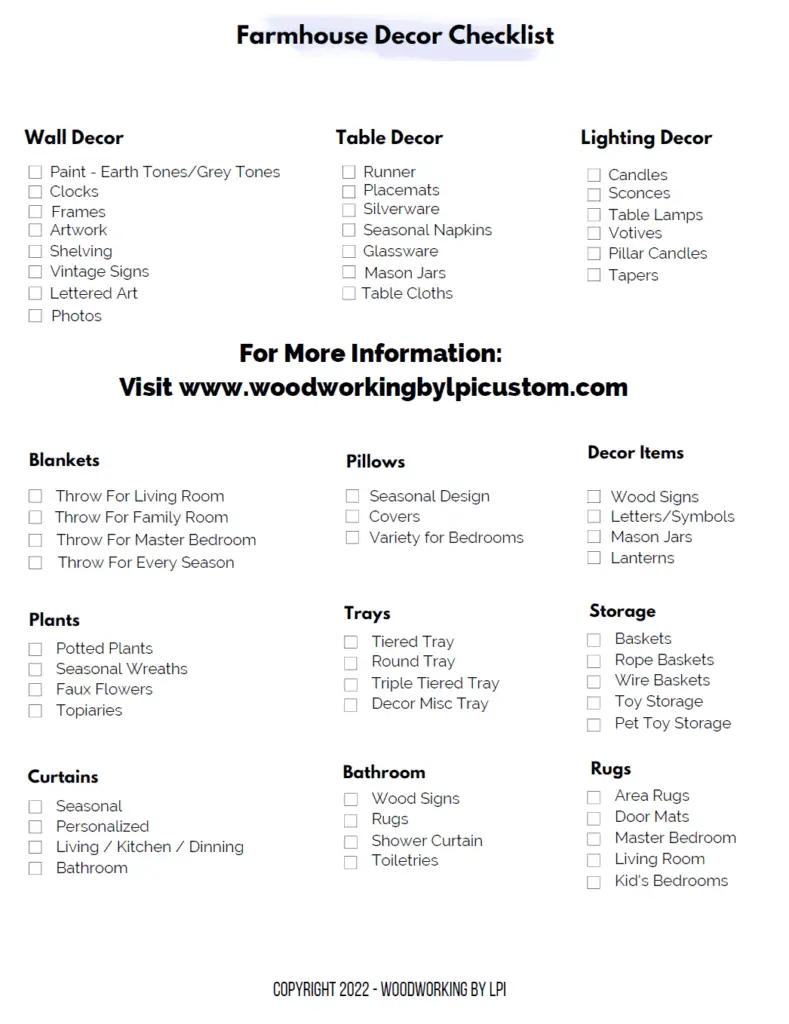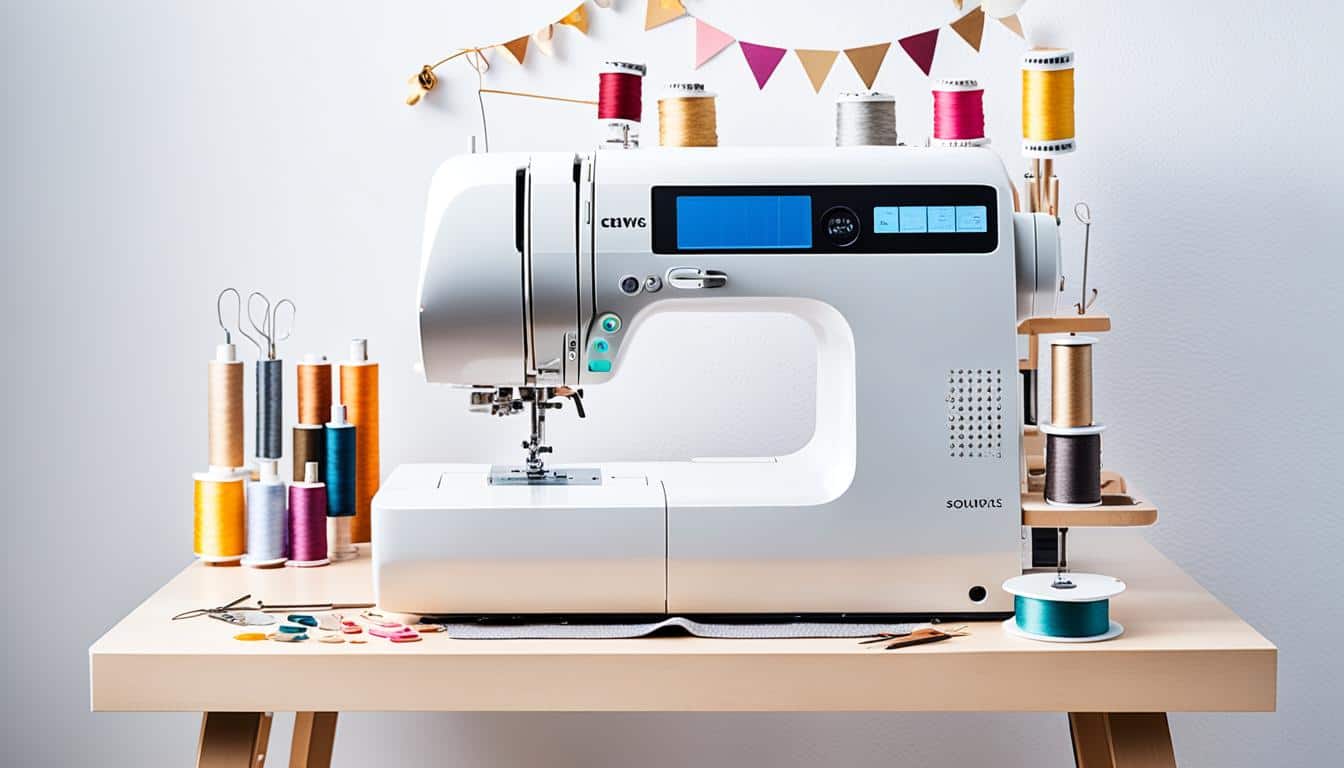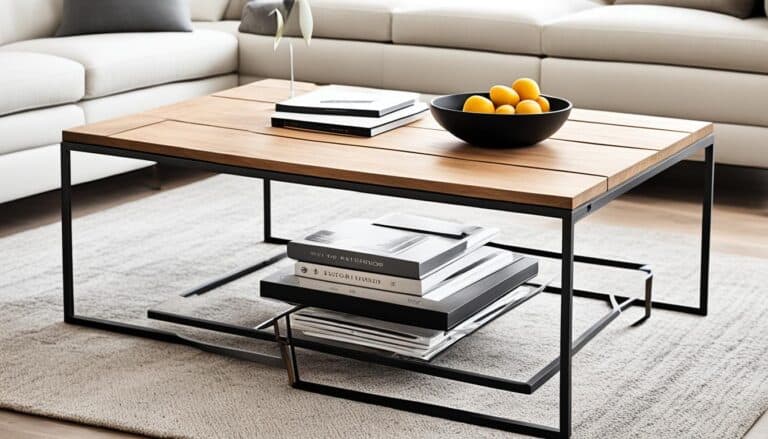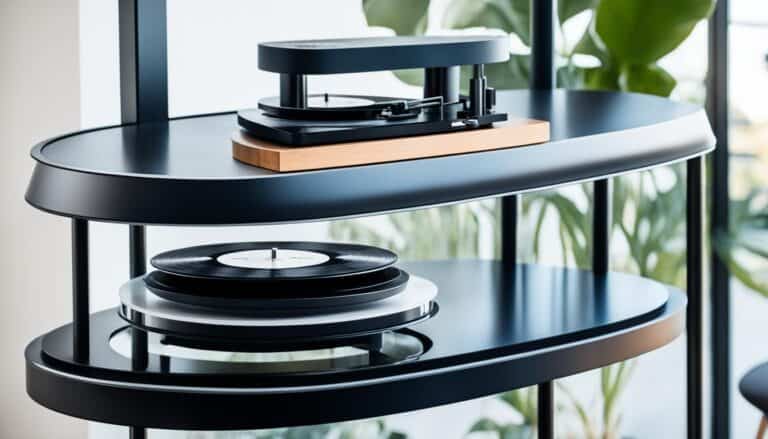Are you tired of hunching over your sewing machine, experiencing back and neck pain after long hours of sewing? What if there was a way to transform your crafting experience and make it more comfortable and efficient? Enter the sewing machine lift, a game-changing accessory that allows you to adjust the height of your sewing machine, providing ergonomic benefits and enhanced storage solutions.
With a custom-made lift, you can elevate your sewing machine to three different positions: on top of the table, slightly recessed to be level with the tabletop, or completely recessed under the table. The adjustable height feature not only reduces strain on your body, but also creates more workspace by keeping the machine out of sight when not in use.
Curious to learn more about how a sewing machine lift can improve your crafting experience? Read on to discover the benefits, different types of lifts available, DIY options, factors to consider when choosing a lift, and real-life experiences from fellow crafters. Unleash the full potential of your sewing projects with a sewing machine lift.
Sewing Machine Lift for Improved Ergonomics
One of the key benefits of a sewing machine lift is improved ergonomics. By being able to adjust the height of your sewing machine, you can customize it to your preferred working position. This eliminates strain on your back and neck, allowing for longer and more comfortable sewing sessions. An adjustable sewing machine table or a sewing machine cabinet lift can provide the necessary support and stability for your sewing machine while offering the flexibility to raise or lower it as needed.
With an adjustable sewing machine table or a sewing machine cabinet lift, you can set the height of your sewing machine to a level that minimizes bending or reaching. This helps maintain proper posture and reduces the risk of repetitive strain injuries. Whether you prefer sewing while standing or sitting, a sewing machine lift allows you to find the perfect height for your comfort and convenience. Say goodbye to discomfort and hello to a healthier sewing experience.
By investing in a sewing machine lift, you’re not only taking care of your body but also enhancing your sewing efficiency. With the ability to adjust the height of your sewing machine, you can easily position your work for optimal visibility and precision. This can be especially beneficial when working on intricate details or delicate fabrics. Finding the right ergonomic setup with a sewing machine lift can greatly improve your sewing accuracy and overall crafting enjoyment.
Reap the Benefits of Sewing Machine Lifts:
- Improved comfort and reduced strain on your back and neck
- Customizable height to suit your preferred sewing position
- Enhanced visibility and precision for intricate sewing tasks
- Increased sewing efficiency and productivity
- Healthier sewing experience with proper posture alignment
Investing in an adjustable sewing machine table or a sewing machine cabinet lift is investing in your well-being and crafting pleasure. Make ergonomics a top priority in your sewing room and enjoy the benefits of a sewing machine lift for years to come.
| Benefits | Features |
|---|---|
| Improved Comfort | Adjustable height for optimal sewing position |
| Ergonomic Support | Reduces strain on back and neck |
| Enhanced Visibility | Customizable height for better visibility and precision |
| Increased Productivity | Efficient and comfortable sewing sessions |
| Healthier Sewing | Promotes proper posture alignment |
Enhanced Storage Solutions with a Sewing Machine Lift
In addition to the ergonomic benefits of a sewing machine lift, it also provides enhanced storage solutions for your sewing room. By utilizing a sewing machine lift, you can easily recess your machine under the table when it’s not in use, allowing you to create more workspace and keep your sewing area clutter-free. This efficient storage solution not only maximizes the available space but also makes it easier to tackle larger sewing projects that require additional room. Incorporating a sewing machine lift into your sewing room design can greatly improve your storage options and enhance the overall organization of your workspace.
Benefits of Sewing Machine Storage Solutions:
- Increased Workspace: By recessing your sewing machine under the table, you free up valuable workspace, providing you with more room to spread out your materials and work comfortably.
- Clutter-Free Environment: Storing your sewing machine under the table keeps it out of sight when not in use, resulting in a cleaner and more organized sewing area.
- Easy Access: With a sewing machine lift, bringing your machine up to the desired height for sewing becomes effortless, allowing you to start your projects quickly and efficiently.
- Versatility: By recessing your sewing machine, you can utilize the table surface for other tasks, such as cutting fabric, pinning patterns, or assembling projects.
- Improved Safety: Storing your sewing machine under the table reduces the risk of accidentally knocking it over or causing any damage, providing a safer and more secure working environment.
| Sewing Machine Storage Solutions | Description |
|---|---|
| Recessing the sewing machine under the table | This storage solution involves using a sewing machine lift to lower the machine into a recessed position under the table. |
| Utilizing built-in storage compartments | Some sewing machine cabinets or tables come with built-in storage compartments, providing convenient storage options for accessories, threads, and other sewing essentials. |
| Adding storage organizers and bins | You can enhance your sewing room’s storage capacity by incorporating additional storage organizers and bins to keep your sewing supplies neatly organized and easily accessible. |
By implementing sewing machine storage solutions, you can optimize your sewing room’s efficiency and create a more productive workspace. With a clutter-free area and ample workspace, you’ll be able to focus on your sewing projects, unleash your creativity, and enjoy a stress-free sewing experience.
Different Types of Sewing Machine Lift Mechanisms
When it comes to sewing machine lifts, there are various mechanisms available in the market to suit different needs. Whether you have a mechanical sewing machine, an embroidery machine, or a quilting machine, choosing the right lift mechanism is essential for proper functionality. Consider the weight capacity, range of motion, and additional features when making your selection.
For mechanical sewing machines, there are lifts specifically designed to support their unique needs. These lifts ensure stability and smooth operation, allowing you to work with precision. If you have an embroidery machine, look for a lift mechanism that can accommodate its larger size and weight, providing the necessary support and flexibility. Quilting machines require lifts that can handle their specialized requirements, such as the ability to accommodate larger quilting frames.
It’s important to carefully evaluate your sewing machine’s weight and dimensions to ensure compatibility with the lift mechanism. Additionally, consider the range of motion offered by the lift. Some mechanisms allow for multiple height adjustments, providing versatility for different sewing techniques or projects. Don’t forget to check for any additional features that might be important to you, such as built-in storage compartments or locking mechanisms for added security.
To help you visualize the different types of sewing machine lift mechanisms, here is a table showcasing some popular options:
| Lift Mechanism | Suitable Sewing Machine Types | Weight Capacity | Range of Motion | Additional Features |
|---|---|---|---|---|
| Mechanical Lift | Mechanical sewing machines | Up to 50 lbs | Adjustable height | Locking mechanism |
| Embroidery Machine Lift | Embroidery machines | Up to 100 lbs | Height adjustability and tilt function | Built-in storage compartments |
| Quilting Machine Lift | Quilting machines with larger frames | Up to 150 lbs | Multiple height positions | Wide surface area for quilting |
Remember, choosing the right sewing machine lift mechanism is crucial for a smooth and efficient sewing experience. Take into account your specific machine type, weight requirements, and desired features to find the perfect lift that complements your sewing setup.
DIY Sewing Machine Lift Options
If you’re the hands-on type, you may consider building your own sewing machine lift. There are DIY options available that utilize linear actuators, rail guides, and other hardware components to create a custom lift mechanism. By sourcing the necessary parts and following detailed instructions or tutorials, you can create a homemade sewing machine lift that suits your specific needs and budget. DIY sewing machine lifts offer a cost-effective alternative to pre-made options while allowing for customization.
Components Needed for a DIY Sewing Machine Lift
Building a DIY sewing machine lift requires a few key components. Here’s a list of the materials you’ll need:
- Linear actuators
- Rail guides
- Mounting brackets
- Screws and bolts
- Power supply
- Control unit
Step-by-Step Guide to Building a Homemade Sewing Machine Lift
- Start by measuring the dimensions of your sewing machine and the desired range of motion for the lift.
- Source the necessary components from a reputable hardware supplier.
- Follow step-by-step instructions or tutorials specifically designed for building a sewing machine lift.
- Assemble the linear actuators, rail guides, and mounting brackets according to the instructions.
- Secure the lift mechanism to your sewing table or cabinet, ensuring it is stable and properly aligned.
- Connect the power supply and control unit to the lift mechanism.
- Test the lift to ensure it operates smoothly and can support the weight of your sewing machine.
Remember to take appropriate safety precautions, such as wearing protective gear and using proper tools, when building your DIY sewing machine lift.
Benefits of a DIY Sewing Machine Lift
Building your own sewing machine lift offers several advantages:
“With a DIY sewing machine lift, you have the freedom to customize the lift mechanism to your specific needs. You can choose the materials, adjust the height range, and incorporate any additional features you desire. This level of customization ensures that your sewing machine lift perfectly complements your sewing setup.”
Table: DIY Sewing Machine Lift Components
| Component | Description |
|---|---|
| Linear actuators | Convert electrical energy into linear motion, allowing the sewing machine to be raised or lowered. |
| Rail guides | Ensure smooth and controlled movement of the sewing machine lift mechanism. |
| Mounting brackets | Securely attach the lift mechanism to the sewing table or cabinet. |
| Screws and bolts | Hold the components together and provide stability to the lift mechanism. |
| Power supply | Provides the electrical energy required to operate the lift mechanism. |
| Control unit | Allows for easy control and adjustment of the lift mechanism. |
Factors to Consider When Choosing a Sewing Machine Lift
When it comes to choosing a sewing machine lift, it’s important to consider a few key factors. By evaluating these factors, you can ensure that you select a lift that perfectly suits your needs and provides an optimal sewing experience.
Weight and Dimensions
Assess the weight and dimensions of your sewing machine to determine the right lift for your needs. Ensure that the lift you choose can adequately support the weight of your machine without compromising its stability or functionality.
Range of Motion and Height Adjustment Options
Consider the range of motion and height adjustment options offered by the sewing machine lift. This will allow you to customize the lift according to your preferred working position and ensure the utmost comfort while sewing.
Stability and Durability
Choose a lift that exhibits excellent stability and durability. This will ensure that your sewing machine remains securely in place during use and can withstand frequent adjustments without compromising its structural integrity.
Budget and Additional Features
Factor in your budget and any additional features or accessories that may be important to you. There are various lifts available on the market with different price points and added functionalities such as storage compartments or integrated power outlets. Consider your specific requirements and prioritize accordingly.
By carefully evaluating these factors, you can make an informed decision and choose a sewing machine lift that will provide optimal support, convenience, and durability. Take the time to assess your sewing needs and explore the options available to find the perfect lift for your crafting setup.
Sewing Machine Lift Installation and Assembly
The installation and assembly process of a sewing machine lift can vary depending on the specific lift mechanism and the design of your sewing table or cabinet. It is important to carefully follow the manufacturer’s instructions and utilize the necessary tools and hardware for a successful installation.
If you’re unsure about the installation process, consult professional help or seek guidance from experienced individuals in the sewing community.
If additional modifications are required for your sewing table or cabinet, such as adding supports or reinforcing the structure, ensure these modifications are made before installing the lift. This will help to ensure the stability and durability of your sewing setup.
Here are some general steps to keep in mind when installing and assembling a sewing machine lift:
- Begin by thoroughly reading the manufacturer’s instructions and familiarizing yourself with the components of the lift mechanism.
- Gather all the necessary tools and hardware recommended by the manufacturer.
- Prepare your sewing table or cabinet by clearing the workspace and ensuring it is clean and free from any obstructions.
- Position the lift mechanism according to the manufacturer’s instructions, ensuring proper alignment and secure attachment to the table or cabinet.
- Follow the step-by-step instructions provided by the manufacturer to install and assemble the lift mechanism, paying close attention to any specific requirements or precautions.
- Double-check all the connections and ensure all screws and bolts are tightened securely.
- Test the lift mechanism to ensure smooth operation and proper functionality.
Remember, the specific installation and assembly process may vary depending on the brand and model of the sewing machine lift you are using. Always refer to the manufacturer’s instructions for the most accurate and detailed guidance.
| Installation Tips |
|---|
| 1. Consult the Manual: Carefully read and follow the manufacturer’s instructions to ensure proper installation and assembly. |
| 2. Use Recommended Tools: Gather the tools and hardware specified by the manufacturer for a successful installation. |
| 3. Seek Professional Help if Needed: If you’re unsure about the installation process, consider consulting a professional or seeking guidance from experienced individuals in the sewing community. |
| 4. Modify as Necessary: Make any required modifications to your sewing table or cabinet before installing the lift, ensuring stability and durability. |
| 5. Test for Smooth Operation: Once installed and assembled, test the lift mechanism to ensure smooth operation and proper functionality. |
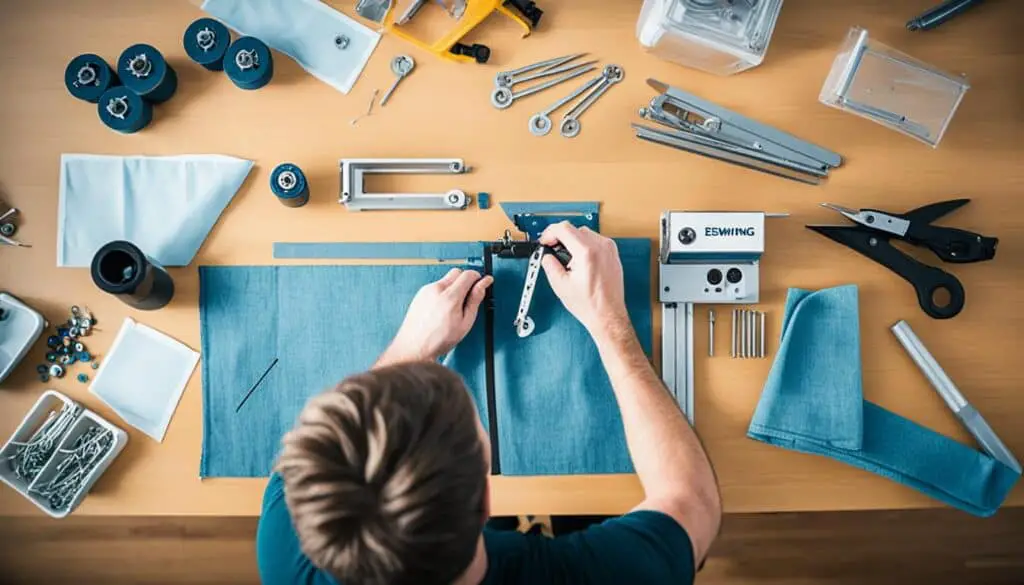
By carefully installing and assembling your sewing machine lift, you can ensure a secure and functional setup that enhances your crafting experience. Enjoy the convenience and ergonomic benefits that a sewing machine lift brings to your sewing room!
Benefits of Using a Sewing Machine Lift Mechanism
Using a sewing machine lift mechanism offers several benefits. Firstly, it improves ergonomics by allowing you to adjust the height of your sewing machine to a comfortable working position. This reduces strain on your body and enhances your sewing experience.
Additionally, a sewing machine lift provides storage solutions by allowing you to recess the machine under the table when not in use, freeing up workspace and creating a more organized sewing area.
Lastly, a lift mechanism adds versatility to your sewing setup, making it easier to switch between different sewing machine heights for various projects or techniques.
With a sewing machine lift mechanism, you can say goodbye to discomfort and back strain caused by hunching over your sewing machine. By adjusting the height of your sewing machine to a position that suits your individual needs and preferences, you can create an ergonomic work environment that promotes better posture and reduces fatigue.
One of the key advantages of using a sewing machine lift mechanism is the storage convenience it provides. When your sewing machine is not in use, you can easily lower it and recess it under the table, allowing you to reclaim valuable workspace. This is particularly beneficial if you have a small sewing room or limited crafting area. By keeping your sewing machine out of the way when it’s not needed, you can maintain a clutter-free and well-organized work area.
Another significant benefit of a sewing machine lift mechanism is its ability to enhance versatility. Different sewing projects may require different machine heights or angles. By utilizing a lift mechanism, you can easily adjust the position of your sewing machine to accommodate various techniques, such as free-motion quilting or machine embroidery. This flexibility allows you to explore different sewing styles and techniques without the need for additional equipment.
“Having a sewing machine lift mechanism has truly revolutionized my sewing experience. Not only can I adjust the height of my machine to perfectly suit my comfort level, but I can also lower it when I need extra workspace. It’s made a noticeable difference in my posture and productivity.”
– Jane Collins, avid seamstress
In summary, a sewing machine lift mechanism offers ergonomic benefits, storage solutions, and increased versatility in your sewing setup. Say goodbye to discomfort, enjoy a clutter-free workspace, and easily switch between different sewing machine heights for optimal sewing results.
Real-Life Experiences with Sewing Machine Lifts
Discover the positive experiences shared by individuals in the sewing community who have utilized sewing machine lifts. Through online reviews and forums, users have expressed their appreciation for the ergonomic improvements, storage solutions, and overall convenience provided by these lift mechanisms.
“The sewing machine lift has been a game-changer for me. Being able to customize the height of my sewing machine has greatly reduced strain on my back and neck, allowing me to sew for longer periods without discomfort.” – Martha S.
In addition to ergonomic benefits, users have also praised the added workspace created when the sewing machine is recessed under the table. This allows for better organization and smoother workflow during sewing sessions.
- Increased productivity
- More functional sewing area
- Better organization
These real-life experiences can provide valuable insights into the benefits of using a sewing machine lift and help inform your decision-making process. Whether you’re an avid quilter, a passionate seamstress, or a professional tailor, the positive feedback from fellow sewers can help you elevate your sewing experience.
Testimonials
“I can’t imagine sewing without my sewing machine lift anymore. It has allowed me to optimize my workspace and keep everything in order. It’s a must-have for any serious sewing enthusiast!” – Angela R.
By incorporating a sewing machine lift into your sewing room setup, you can enjoy the benefits of improved ergonomics, enhanced storage solutions, and a more efficient workflow. Take inspiration from these user experiences and explore the world of sewing machine lifts to find the perfect solution for your sewing needs.
Sewing Machine Lift Brands and Models to Consider
When it comes to sewing machine lifts, there are several reputable brands that offer a range of models and features to suit different needs and preferences. If you’re in the market for a sewing machine lift, consider the following popular brands:
- Rockler: Known for their high-quality woodworking tools and accessories, Rockler offers sewing machine lifts that are durable and reliable. Their models are designed to accommodate various sewing machines and provide smooth and effortless height adjustment.
- SewEz: SewEz is a trusted name in the sewing community, and their sewing machine lifts are no exception. With innovative design features and a commitment to quality, SewEz offers lifts that provide exceptional stability and ease of use.
- Horn of America: Horn of America is known for their versatile and functional sewing furniture, and their sewing machine lifts are no different. Their models are designed with practicality and convenience in mind, offering a range of motion and storage options.
Research and Considerations
When researching and considering different sewing machine lift models, there are a few key factors to keep in mind:
- Weight Capacity: Ensure that the lift can support the weight of your sewing machine without compromising stability or performance.
- Range of Motion: Look for a lift that provides a range of height adjustment options to accommodate your preferred working position.
- Customer Reviews: Read customer reviews to get insights into the real-life experiences and opinions of others who have used the specific sewing machine lift models you’re considering.
By researching different brands and models, considering factors such as weight capacity, range of motion, and customer reviews, you can find a sewing machine lift that is both reliable and suitable for your needs.
| Brand | Weight Capacity | Range of Motion | Customer Reviews |
|---|---|---|---|
| Rockler | Up to 225 lbs | Adjustable height positions | Highly rated for durability and stability |
| SewEz | Varies by model | Smooth and effortless adjustment | Positive reviews for ease of use |
| Horn of America | Up to 80 lbs | Multiple storage options | Praised for versatility and functionality |
Maintenance and Care for Sewing Machine Lifts
To ensure the longevity and optimal performance of your sewing machine lift, it is important to follow proper maintenance and care practices. By taking care of your lift, you can extend its lifespan and continue to enjoy its benefits for years to come.
Here are some essential maintenance and care tips for your sewing machine lift:
- Regular Cleaning: Clean the lift mechanism regularly to prevent debris buildup. Use a soft cloth or brush to remove dust and other particles. Avoid using harsh chemicals or abrasive cleaners that can damage the lift.
- Lubrication: Lubricate the moving parts of the lift mechanism to ensure smooth operation. Consult the manufacturer’s guidelines to determine the appropriate lubricant to use and how often to apply it.
- Check for Loose Screws or Bolts: Periodically inspect the lift for any loose screws or bolts. Tighten them as necessary to maintain stability and prevent potential issues.
- Avoid Excessive Weight: Avoid placing excessive weight on the lift or forcing it beyond its weight capacity. Overloading the lift can lead to damage or malfunction.
“Proper maintenance and care are crucial for preserving the functionality and durability of your sewing machine lift.”
By following these maintenance and care practices, you can ensure that your sewing machine lift operates smoothly and remains in good condition. Taking the time to care for your lift will not only extend its lifespan but also contribute to a more enjoyable and efficient sewing experience.
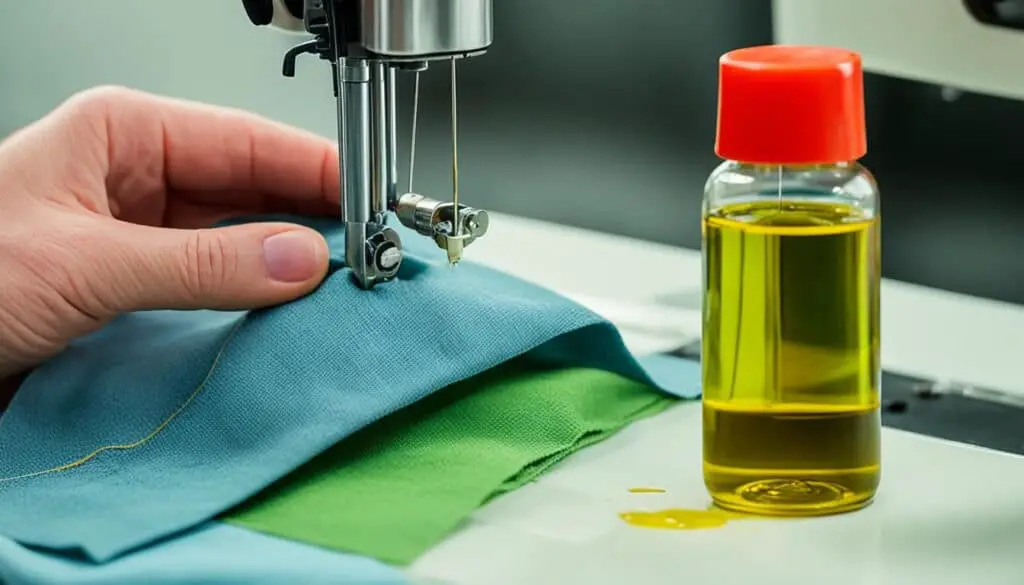
Alternatives to Sewing Machine Lifts
If a sewing machine lift is not suitable for your sewing setup or budget, there are alternatives to consider. Sewing machine accessories such as extension tables, sewing machine cabinets with built-in lifts, or adjustable sewing machine platforms can provide similar benefits in terms of ergonomics and storage solutions.
Extension tables are a popular choice for expanding your workspace and supporting larger sewing projects. These tables attach to your existing sewing table and can be adjusted to different heights, allowing you to comfortably work on a range of projects.
Sewing machine cabinets with built-in lifts offer a convenient all-in-one solution. These cabinets come equipped with a lift mechanism that allows you to raise or lower your sewing machine as needed. They also provide additional storage space for your sewing supplies, keeping everything organized and easily accessible.
Adjustable sewing machine platforms are another alternative to consider. These platforms can be placed on top of your sewing table and provide a stable surface for your machine. They often have adjustable height settings, allowing you to find the perfect working position.
Explore these alternatives to find the best solution for your specific needs.
Here’s a comparison table highlighting the features and benefits of each alternative:
| Alternative | Ergonomics | Storage Solutions | Height Adjustment |
|---|---|---|---|
| Extension Tables | ✓ | ✓ | Included |
| Sewing Machine Cabinets with Built-in Lifts | ✓ | ✓ | Adjustable |
| Adjustable Sewing Machine Platforms | ✓ | ✓ | Adjustable |
Each alternative has its own advantages and considerations. Consider your specific needs, budget, and available space to determine which option suits you best. Whether it’s an extension table, a sewing machine cabinet, or an adjustable platform, these accessories can enhance your sewing experience and provide the ergonomic support and storage solutions you’re looking for.
Tips for Creating an Efficient Sewing Room Layout
Creating an efficient sewing room layout is essential for maximizing your productivity and enjoyment while working on your projects. With a carefully planned sewing room, you can optimize your workflow, easily access your tools and supplies, and maintain a clutter-free and organized space. Follow these tips to create an efficient sewing room layout that will enhance your crafting experience.
- Consider the placement of your sewing machine lift: When designing your sewing room layout, think about where to position your sewing machine lift to optimize workflow and accessibility. Place it in a central location that allows for easy movement around your sewing table or cabinet.
- Arrange your sewing table or cabinet strategically: Ensure that your sewing table or cabinet is arranged in a way that facilitates smooth and efficient movement. Consider the height of your table or cabinet, as well as the arrangement of other furniture pieces, to allow for comfortable and accessible sewing.
- Utilize storage solutions: Incorporate various storage solutions such as shelves, drawers, and bins to keep your sewing area organized and clutter-free. Assign specific storage areas for different tools, fabrics, and notions to create a system that is easy to navigate and maintain.
- Create a dedicated cutting and ironing area: Allocate a specific space in your sewing room for cutting fabrics and pressing your garments. This area should be well-lit and equipped with a cutting table, cutting tools, and an ironing board to facilitate efficient fabric preparation.
- Incorporate proper lighting: Good lighting is crucial for accurate stitching and reducing eye strain. Ensure that your sewing room is well-lit with natural light or a combination of overhead lights and task lighting. Consider using adjustable lamps to provide focused lighting when needed.
- Choose ergonomic seating: Invest in a comfortable and ergonomic chair that supports good posture during long sewing sessions. A chair with adjustable height and backrest will allow you to tailor it to your specific needs, reducing the risk of fatigue and discomfort.
Creating a Functional Sewing Room:
“A well-designed sewing room enhances your creativity and makes your sewing process seamless. By optimizing your sewing room layout and incorporating efficient storage solutions, you can focus on what you love most – sewing!”
– Renowned Sewing Expert
| Benefits of an Efficient Sewing Room Layout | Tips for Creating an Efficient Sewing Room Layout |
|---|---|
| Optimized workflow | Consider the placement of your sewing machine lift |
| Easy access to tools and supplies | Arrange your sewing table or cabinet strategically |
| Clutter-free and organized space | Utilize storage solutions |
| Efficient cutting and pressing area | Create a dedicated cutting and ironing area |
| Proper lighting for accurate stitching | Incorporate proper lighting |
| Comfortable and ergonomic seating | Choose ergonomic seating |
By following these tips and implementing an efficient sewing room layout, you can create a space that enhances your creativity, productivity, and overall sewing experience. Take the time to plan and organize your sewing room to ensure that it reflects your unique workflow and personal style.
Creating an efficient sewing room layout is essential for maximizing your productivity and enjoyment while working on your projects. With a carefully planned sewing room, you can optimize your workflow, easily access your tools and supplies, and maintain a clutter-free and organized space. Follow these tips to create an efficient sewing room layout that will enhance your crafting experience.
| Tip | Description |
|---|---|
| Consider the placement of your sewing machine lift | Position your sewing machine lift in a central location to optimize workflow and accessibility. |
| Arrange your sewing table or cabinet strategically | Create a layout that allows for easy movement and access to tools and supplies. |
| Utilize storage solutions | Incorporate shelves, drawers, and bins for organized and clutter-free sewing area. |
| Create a dedicated cutting and ironing area | Allocate a specific space with a cutting table and ironing board for fabric preparation. |
| Incorporate proper lighting | Ensure good lighting with natural light or adjustable lamps for accurate stitching. |
| Choose ergonomic seating | Invest in a comfortable chair that supports good posture during long sewing sessions. |
“A well-designed sewing room enhances your creativity and makes your sewing process seamless. By optimizing your sewing room layout and incorporating efficient storage solutions, you can focus on what you love most – sewing!”
– Renowned Sewing Expert
By following these tips and implementing an efficient sewing room layout, you can create a space that enhances your creativity, productivity, and overall sewing experience. Take the time to plan and organize your sewing room to ensure that it reflects your unique workflow and personal style.
Conclusion
In conclusion, a sewing machine lift can greatly enhance your crafting experience by improving ergonomics, providing efficient storage solutions, and adding versatility to your sewing setup. By carefully considering factors such as weight capacity, range of motion, and installation requirements, you can choose a sewing machine lift that meets your specific needs. Whether you opt for a pre-made lift from reputable brands like Rockler, SewEz, or Horn of America, or decide to embark on a DIY project, the addition of a sewing machine lift will transform your sewing room.
Remember to follow proper maintenance and care practices to ensure the longevity and optimal performance of your lift mechanism. Regular cleaning and lubrication, as well as checking for any loose screws or bolts, will keep your lift in excellent condition. By taking care of your sewing machine lift, you can continue to enjoy the comfort, efficiency, and convenience it brings to your crafting endeavors for years to come.
Elevate your sewing today with a sewing machine lift and unlock the full potential of your crafting projects. Whether you’re working on quilting, embroidery, or traditional sewing, the adjustable height, improved ergonomics, and enhanced storage options will make your sewing experience more enjoyable and productive. Take the next step in creating your dream sewing room and bring your crafting skills to new heights with a sewing machine lift!
FAQ
What is a sewing machine lift?
A sewing machine lift is a mechanism that allows you to adjust the height of your sewing machine to different positions, providing enhanced comfort and efficiency.
How does a sewing machine lift improve ergonomics?
By adjusting the height of your sewing machine, you can customize it to your preferred working position, reducing strain on your back and neck during sewing sessions.
How does a sewing machine lift enhance storage solutions?
By recessing the sewing machine under the table when not in use, a sewing machine lift creates more workspace and helps keep your sewing area organized and clutter-free.
What types of sewing machines can a sewing machine lift accommodate?
Some sewing machine lifts are specifically designed for mechanical sewing machines, while others can accommodate embroidery or quilting machines. Choose a lift compatible with your specific type of machine.
Can I build my own sewing machine lift?
Yes, there are DIY options available for building a sewing machine lift using linear actuators, rail guides, and other hardware components.
What factors should I consider when choosing a sewing machine lift?
Consider the weight capacity, range of motion, stability, and durability of the lift mechanism, as well as any additional features that may be important to you.
How do I install a sewing machine lift?
The installation process varies depending on the lift mechanism and the design of your sewing table or cabinet. Follow the manufacturer’s instructions and utilize the necessary tools and hardware for a successful installation.
What are the benefits of using a sewing machine lift mechanism?
Using a sewing machine lift improves ergonomics, provides storage solutions, and adds versatility to your sewing setup, allowing you to switch between different machine heights for various projects or techniques.
What do users say about sewing machine lifts?
Users have shared positive experiences with sewing machine lifts, praising the ergonomic improvements, storage solutions, and overall convenience they provide.
Which sewing machine lift brands and models should I consider?
Some popular brands to consider include Rockler, SewEz, and Horn of America. Research different models within these brands based on factors such as weight capacity and customer reviews.
How do I maintain and care for my sewing machine lift?
Regularly clean and lubricate the lift mechanism, check for loose screws or bolts, and avoid placing excessive weight on the lift. Follow proper maintenance and care practices to ensure its longevity and optimal performance.
Are there alternatives to sewing machine lifts?
Yes, sewing machine accessories such as extension tables, sewing machine cabinets with built-in lifts, or adjustable sewing machine platforms can provide similar benefits in terms of ergonomics and storage solutions.
Any tips for creating an efficient sewing room layout?
Consider the placement of your sewing machine lift, arrange your sewing table or cabinet for easy movement and access, utilize storage solutions, and incorporate proper lighting and ergonomic seating.

